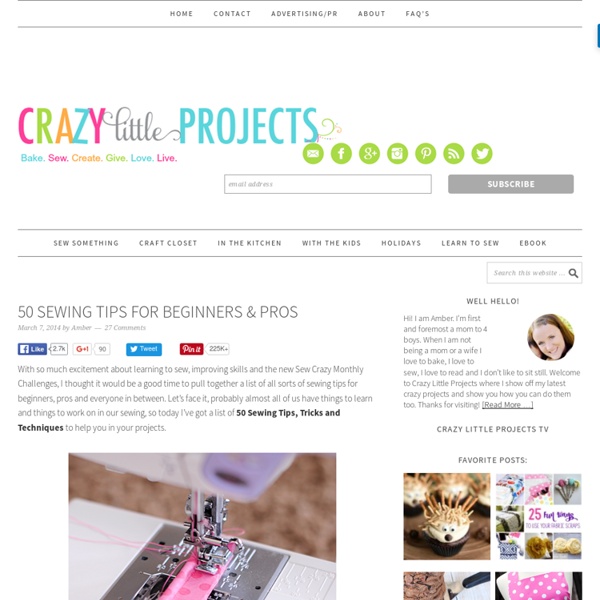Sewing Tips for Beginners & Pros

Sewing Tips For Beginners
I've shared a bunch of sewing project with you guys, but have never gone into much detail about actually sewing. I know that there are all levels of sewers out there, and I want my blog to be a place where all are able to enjoy my projects. This is why I wanted to give some tips for all you beginners out there interested in whipping up some new handmade goodies. I've highlighted what I think are the most important things to know about sewing. Know Your Machine & Read Your User Manual I believe knowing your sewing machine is the most important part of sewing. Google For Reference This tip may sound a bit lame or obvious, but it is still high up on my list. Have The Correct Accessories There are certain accessories, or tools, that every sewer should have. Pressing Did you notice that an iron was in the list of important tools to have? Start With Woven Fabrics Woven fabrics are those that are formed by weaving, and are only stretchy on the bias. Start With A Small Project Pinning
Embroidery Tips
Here are some basic Embroidery Tips that we use all the time here at Flamingo Toes! These are great beginner stitches – if you are just learning Embroidery they are a great place to start! Bring your needle up about 1/8″ from the beginning of your line. That is your “A” point. For the next stitch, you’ll repeat the process – up at “A”, down at “B”, up at “C”. When you get to a point, just make your “C” point across the point. You can find the Backstitch in these Projects: For the Stem Stitch, the point where your thread comes up is “A”. The distance between A, B, & C should be the equal. Keep your loose thread above the stitch, and repeat, following the picture below. Continue stitching this way following all lines and curves. You can find the Stem Stitch in these Projects: Close to the point that the thread comes out of the fabric, hold your needle and wrap the thread around the needle 3 times. You can find the French Knot in these Projects: You can find the Lazy Daisy Stitch in these Projects
How to Sew (using a sewing machine)
If you already have a machine, it's imperative to make sure it's been recently serviced. Doing this will ensure your mechanics (such as the Bobbin Tension and Feed Dog - the mechanism that moves the fabric when sewing) are in proper working order and any abnormality in sewing will be "pilot error", which can be corrected through practice. If you haven't been gifted a machine and are looking to purchase your first machine, here are some hints to help you choose the right one. a. b. c.
15 things home sewers can learn from industrial sewing
Today, we have a very special guest post from local sewing legend, Sharon Blair. Sharon runs Portland Sewing, where she and her faculty teach a wide range of classes including industrial techniques. I had the pleasure of meeting Sharon recently and asked her to fill us in on some tips home sewers can take away from industry practices. -Sarai image: industrial sewing machine by kerem79 I like to sew. That’s what sewing with an industrial machine can do for you. But there are many other techniques from the industry you can use to improve your sewing and the look of your garments without buying the machine. Change your seam allowances. There are so many other fun and interesting techniques to use when making a professional garment. About Sharon: Fashion entrepreneur, designer and writer Sharon Blair studied couture sewing in Paris.
Related:
Related:



